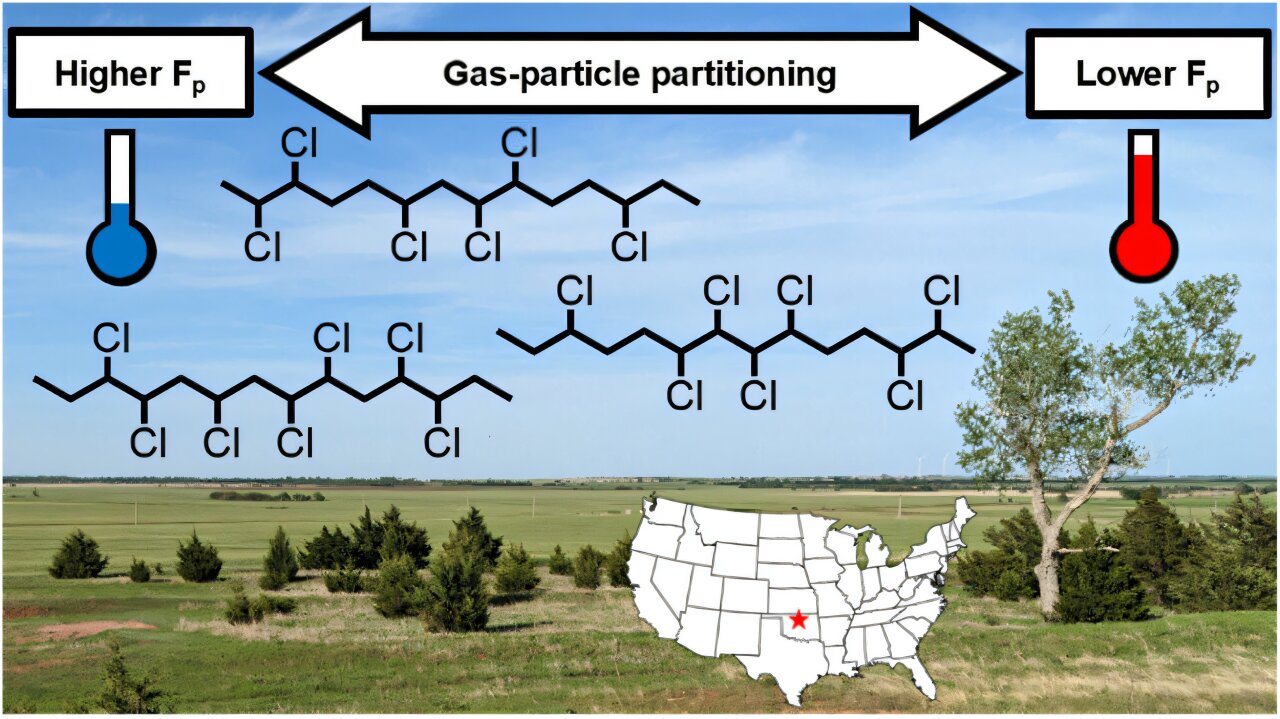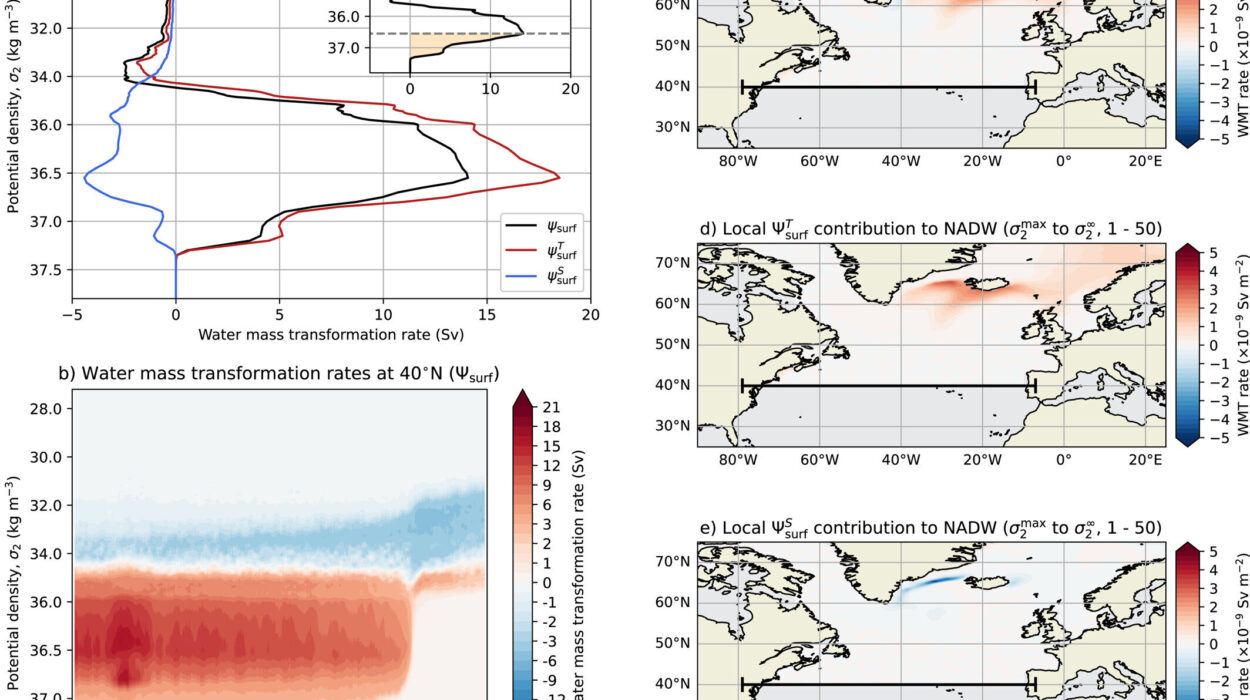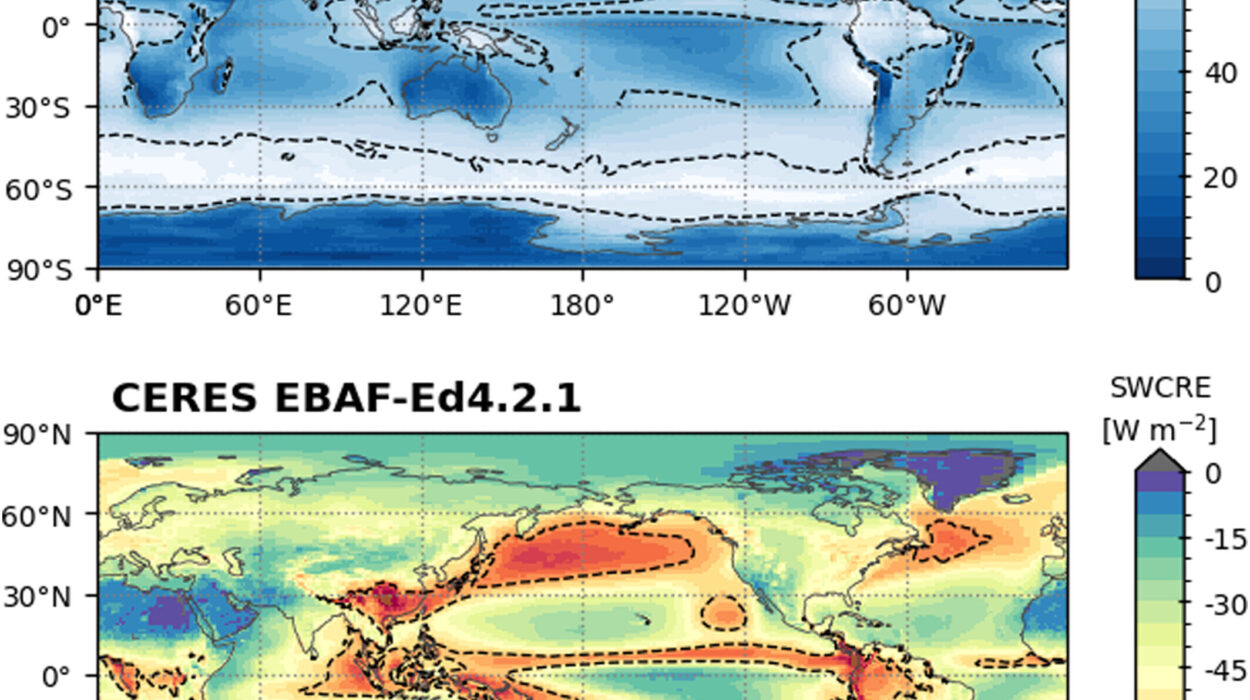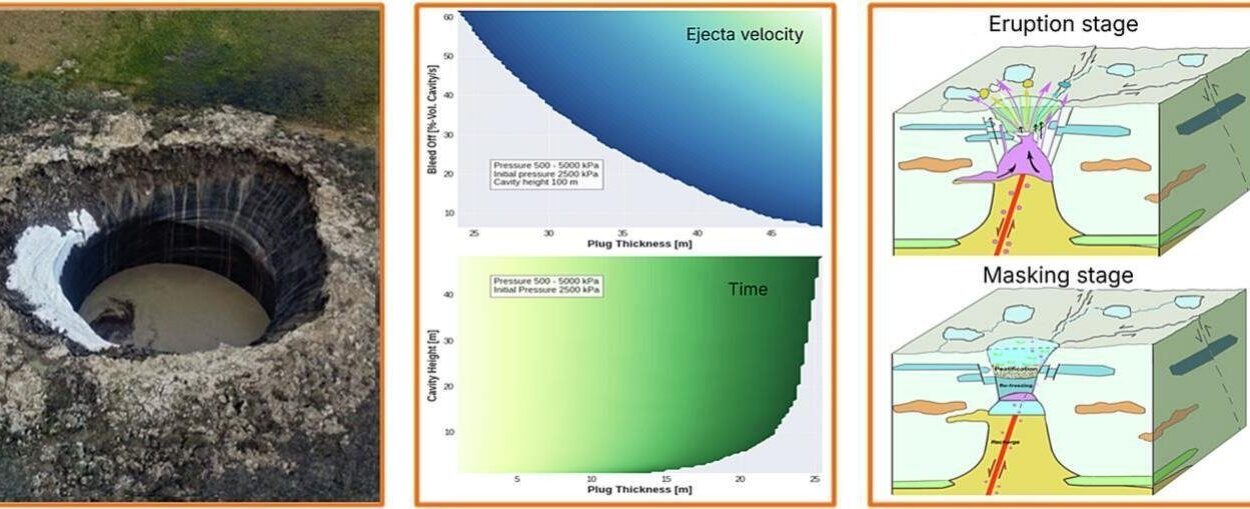Once in a while, scientific exploration unfolds like a gripping detective story. Researchers head into the field armed with hypotheses, sophisticated tools, and specific expectations—only to be met with a surprise twist that leads them down a completely different path. That was exactly the case for a team of atmospheric scientists from the University of Colorado Boulder, who recently found themselves unraveling a chemical mystery above the farmland of Oklahoma.
Their mission was routine in appearance: conduct air quality measurements in an agricultural region using a high-tech chemical analyzer. But what they stumbled upon wasn’t just another data set—it was a first-of-its-kind discovery in the Western Hemisphere. In the air above Oklahoma’s crop fields, they captured traces of medium chain chlorinated paraffins (MCCPs), a type of persistent and toxic industrial pollutant. It was the first time MCCPs had ever been detected in the air from this part of the world, and the implications of the finding could reshape how we think about agricultural practices, air pollution, and global chemical regulation.
A Scientific Surprise Hidden in the Oklahoma Breeze
The discovery happened during a month-long air monitoring campaign, where researchers set up instruments capable of detecting microscopic aerosol particles floating in the atmosphere. Their goal was to study how such aerosols form and evolve—especially in rural, agricultural environments.
Daniel Katz, a chemistry Ph.D. student at CU Boulder and the lead author of the study published in ACS Environmental Au, was poring over data collected by a nitrate chemical ionization mass spectrometer, a specialized tool that allows scientists to detect and identify trace chemicals in the air. As he sifted through the intricate mass spectra, Katz noticed something unusual. Some of the compounds didn’t match the known chemical signatures they were expecting to find.
Instead, what emerged from the data were distinct isotopic fingerprints—chemical clues pointing to MCCPs, a group of chlorinated hydrocarbons that hadn’t yet been measured in the air over North or South America. Until that moment, airborne MCCPs had only been documented in select parts of Asia and the Antarctic region.
“It’s very exciting as a scientist to find something unexpected like this that we weren’t looking for,” Katz said. “We’re starting to learn more about this toxic, organic pollutant that we know is out there, and which we need to understand better.”
What Are MCCPs—and Why Should We Care?
Medium chain chlorinated paraffins are synthetic compounds primarily used as additives in industrial processes. They’re found in metalworking fluids, plasticizers in PVC, flame retardants, and even textiles. But their usefulness comes at a cost. These compounds are highly persistent in the environment, meaning they don’t easily degrade and can remain in ecosystems for years. Like their chemical relatives—short chain chlorinated paraffins (SCCPs)—MCCPs are believed to be toxic to humans and wildlife, especially when exposure occurs over long periods.
Currently, MCCPs are being evaluated for regulation under the Stockholm Convention, a global treaty aimed at eliminating or restricting dangerous pollutants. The convention already includes SCCPs on its list of restricted chemicals due to their carcinogenic properties and ability to travel long distances through air and water.
The problem? As governments began regulating SCCPs, industries needed a substitute—and MCCPs became the go-to replacement. This switch may have inadvertently increased the prevalence of MCCPs in the environment.
“We always have these unintended consequences of regulation,” said Ellie Browne, CU Boulder chemistry professor and co-author of the study. “You regulate something, and then there’s still a need for the products that those were in, so they get replaced by something else.”
That “something else” is now floating invisibly over agricultural fields in the United States.
The Suspected Source: Fertilizer Made from Sewage Sludge
One of the biggest questions following the discovery of airborne MCCPs was: where are they coming from?
Researchers believe the answer may lie beneath the fields—quite literally. MCCPs are frequently detected in wastewater, and after treatment, much of that wastewater is turned into a product called biosolid fertilizer. This fertilizer, essentially treated sewage sludge, is commonly used in agriculture to enrich soils with nutrients. But it can also harbor residual pollutants from the original wastewater stream.
“When sewage sludges are spread across the fields, those toxic compounds could be released into the air,” Katz explained. “We can’t show directly that that’s happening, but we think it’s a reasonable way that they could be winding up in the air. Sewage sludge fertilizers have been shown to release similar compounds.”
This theory is bolstered by recent environmental concerns in Oklahoma. In response to increasing awareness of “forever chemicals” like PFAS—a class of persistent synthetic pollutants that share similarities with MCCPs—the Oklahoma Senate recently passed a ban on the use of biosolid fertilizers. The presence of MCCPs in the state’s atmosphere may serve as another compelling reason to rethink these practices.
A High-Tech Tool Reveals Invisible Threats
At the heart of this discovery was a sophisticated instrument: the nitrate chemical ionization mass spectrometer. This device works by drawing in air and ionizing the molecules inside it, which then allows researchers to sort them by their mass and chemical composition. It’s a bit like using an ultra-sensitive nose that can not only smell the air, but also tell you exactly what chemicals are present—even in infinitesimal amounts.
Over a period of 30 days, the instrument operated 24/7, quietly sniffing the air above the Oklahoma farmland. What it found was not only surprising but also alarming. The spectral data Katz analyzed revealed consistent patterns that didn’t match common aerosols or pollutants previously seen in agricultural settings.
After careful cross-referencing and data validation, the CU Boulder team confirmed that the unusual patterns belonged to MCCPs. This identification was a breakthrough not just for their study, but also for the wider scientific community. Until now, researchers didn’t have a clear method for measuring airborne MCCPs in the Western Hemisphere.
Opening a New Chapter in Atmospheric Pollution Research
Now that a method exists to detect MCCPs in the atmosphere, researchers can begin to ask deeper questions about how these chemicals behave in the air, how far they travel, how long they linger, and most importantly, what health and environmental impacts they may pose.
“We identified them, but we still don’t know exactly what they do when they are in the atmosphere,” Katz said. “They need to be investigated further.”
Future research could involve long-term monitoring across different seasons to determine how MCCP concentrations vary throughout the year. The team also plans to investigate how these pollutants interact with other airborne chemicals and particles—potentially altering the composition of the air in ways not yet fully understood.
A Call for Smarter, Science-Driven Regulation
The discovery in Oklahoma is more than just an academic curiosity—it has real-world implications for environmental policy, industrial regulation, and public health. It’s a vivid reminder of the complex chain reactions that can follow even well-intentioned regulations.
“We need to have governmental agencies that are capable of evaluating the science and regulating these chemicals as necessary for public health and safety,” Katz emphasized.
As the international community continues to assess the danger posed by MCCPs, this new evidence from the United States could influence global decisions. It also highlights the need for proactive environmental monitoring—especially in places where industrial chemicals may find unexpected pathways into air, water, or soil.
The Bigger Picture: Environmental Mysteries Waiting to Be Solved
The discovery of airborne MCCPs in the U.S. underscores the evolving nature of environmental science. With every breakthrough, new questions emerge. What other persistent pollutants are hiding in plain sight? What role does agriculture play in the atmospheric circulation of toxic compounds? And how can policy keep pace with the dynamic, interconnected systems of nature and industry?
In many ways, this research project illustrates the essence of modern science: curiosity-driven, methodologically rigorous, and open to the unexpected. What started as a routine atmospheric study turned into a landmark finding—proof that sometimes, the biggest discoveries happen when you least expect them.
As the research community races to close the knowledge gaps around MCCPs, the air over Oklahoma serves as a quiet reminder: even the clearest skies can carry secrets. And it’s up to science to bring those secrets into the light.
Reference: Daniel John Katz et al, Real-Time Measurements of Gas-Phase Medium-Chain Chlorinated Paraffins Reveal Daily Changes in Gas-Particle Partitioning Controlled by Ambient Temperature, ACS Environmental Au (2025). DOI: 10.1021/acsenvironau.5c00038






